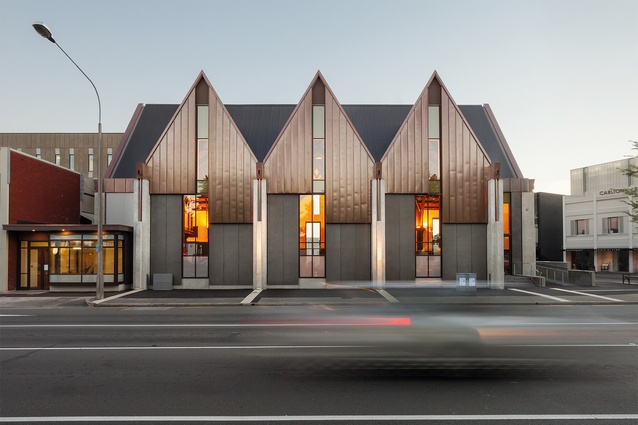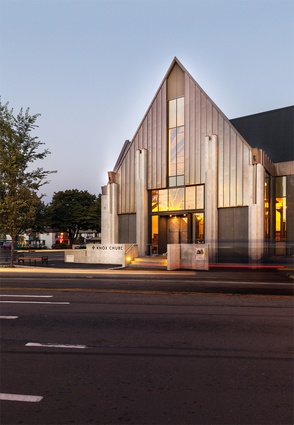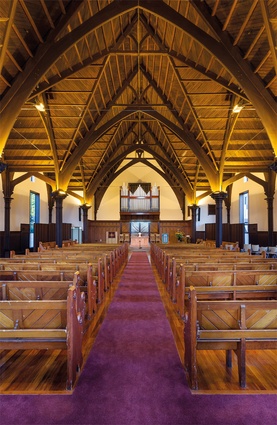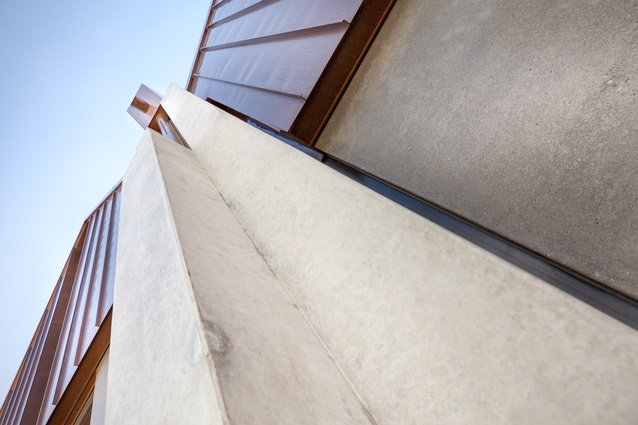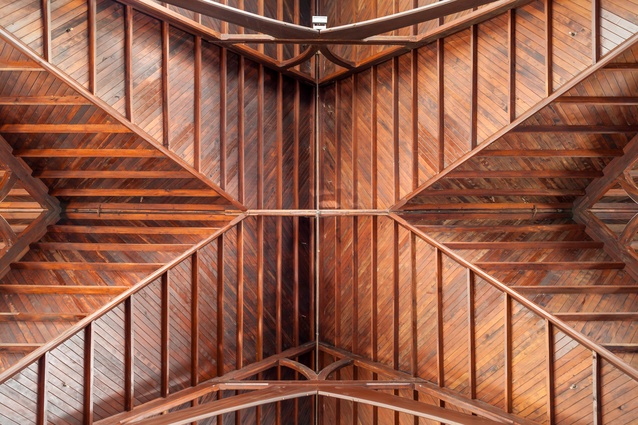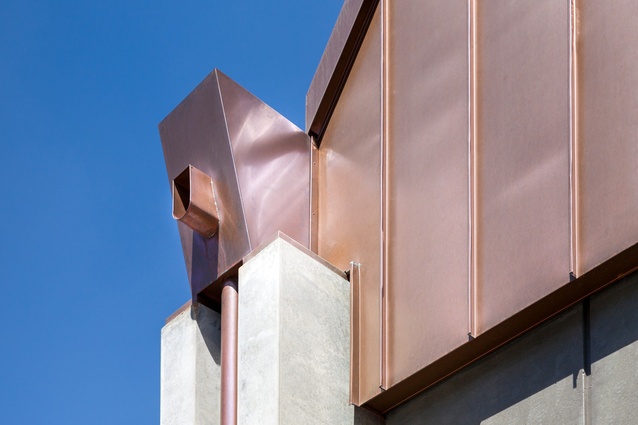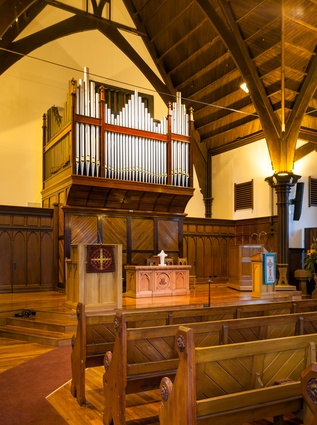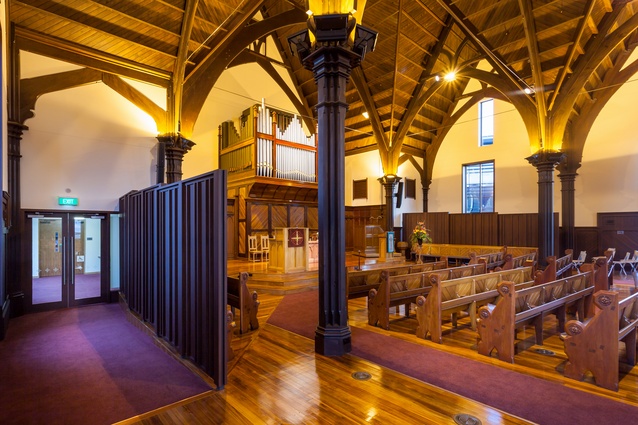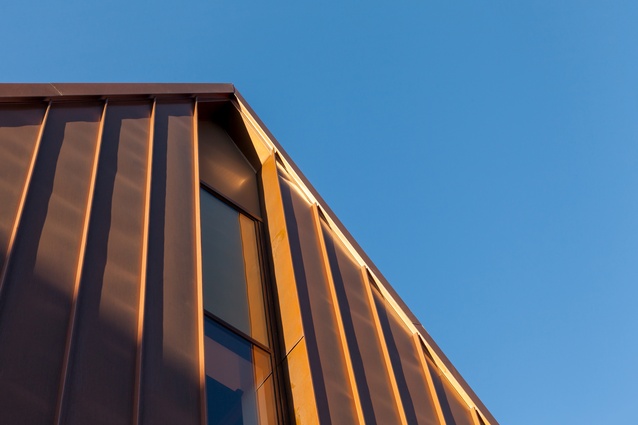Knox Presbyterian Church rebuild
Christchurch continues to fight to retain what little is left of its architectural heritage following the Canterbury ‘quakes. So, it is with hope that we celebrate the recent announcement that the Christchurch Town Hall is to be resurrected and, along with Isaac Theatre Royal, which was recently restored by Warren and Mahoney and a talented team of conservation experts, Knox Presbyterian Church has been ‘rebuilt’ by local firm Wilkie + Bruce Architects.
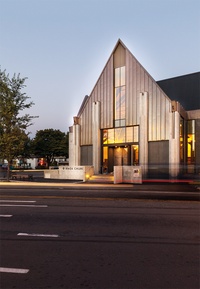
But the story of Knox Church isn’t just about the preservation and reinvention of an earthquake-damaged church – with the interior now restored and a new seismic-resistent shell built around it – this building is also about the history of Christchurch’s early colonial settlement by the Scottish Presbyterians. And it’s a story shared by many New Zealanders.
Let’s set the scene. In the 1830s and ’40s, unemployment was high in parts of Scotland so the Presbyterians decided to send out a Scotch colony to New Zealand. Three families settled in Riccarton around 1843, becoming one of the first pakeha settlements. It is unsurprising, then, that in 1850, when the 782 Anglican ‘Canterbury Pilgrims’ arrived, they were rather ‘put out’ that they had been beaten to this outpost by the Scottish Presbyterians.
Luckily for the Scots, their land entitlements were verified by the Crown and they went about their business of farming and building. The Presbyterians were also adept at the business of populating their new country (my own ancestors, Samuel and Jean Manson, were one of the three families and they had 22 children with 17 surviving to adulthood) so, later in the century, it seems evident that many new churches were needed for this rapidly growing congregation.
In 1880, one of the new churches, known as North Belt Church, was designed in timber by Samuel Farr and built on Knox’s current site on the corner of Victoria Street and Bealey Avenue. Of course, attendance grew further and led to the building of another new church in 1902, sited adjacent to the original. Architects Robert and Edward England designed Knox Church in the distinctive Gothic Revival style with triple gables and soaring timber archways. In 1964, the wooden buildings of 1880 were replaced by a modern annex which still stands. But, when the Canterbury earthquakes struck, the exterior of Knox Church was destroyed: century-old bricks fell and limestone cracked, leaving the timber skeleton exposed.
Wilkie + Bruce’s reinvention followed, with a brief from the church to create “a community-open, worship-eliciting space”, combining heritage restoration of the timber interior with an earthquake-resistant design for the exterior, while retaining its distinctive peaked roofline.
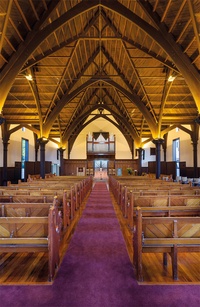
The end result is a lightweight, modern interpretation of the original design, which fulfils the brief and provides seating for up to 400 people, with improved insulation, better accessibility and a new sound system. The architects went about resetting the church onto a new raft foundation that extends 3m out from the edges of the building, “spreading the weight of the building like snowshoes,” explains architect Alun Wilkie. Now the walls will flex in the event of a big ’quake, supported by a rocking steel frame.
The front entrance on Victoria Street has large, faceted bronze doors leading into a glazed vestibule, providing passers-by with views of the stunning timber interior. The use of slender-profiled steel window frames, faded copper cladding, concrete buttresses and coloured steel roofing creates a robust and dignified ‘Canterbury building’ with a built-in patina. The post-tensioned fair-faced concrete buttresses are dominant features on the exterior, harking back to the buttresses of the original design. Wilkie describes this ‘readable’ use of locally sourced concrete as “anti-gravity” and you can imagine why this interpretation might be required in Christchurch.
Currently, there are too many churches disappearing before our eyes. While I’m not a religious person, I still think we need to honour these sacred places that connect us to the history of New Zealand. These places hold the stories of our families and communities, and exploring an old building is a far more engaging way to learn than is viewing old photographs or books. My own ancestors, with their 17 children, leased land from local Maori; they made and exported cheese to Australia and dealt with bandits from the goldfields and, yet, the head of the family was described as “otherwise unremarkable” in a newspaper account from the 1890s. This is a cautionary tale, I think.
History can be portrayed and perceived in many ways. History is contained within Knox and all of the other churches that were built in times that were more religious than those in which we live today. While they might be seen as unremarkable today, time may have a different perspective. I wonder if we should be asking the same question of ourselves that plagued Scotland’s famous bard Robert Burns: “Should auld acquaintance be forgot?”

